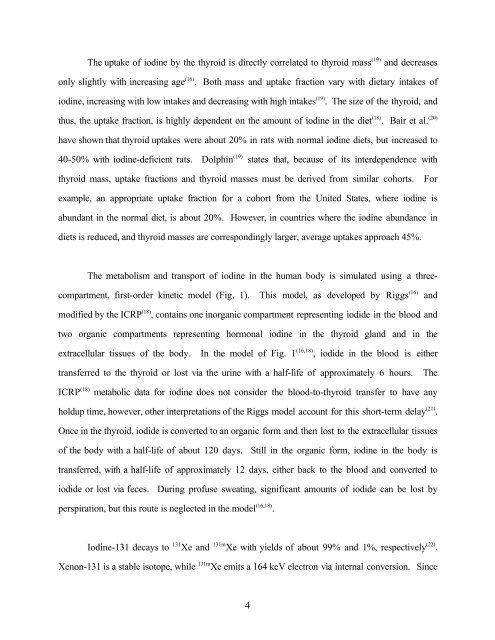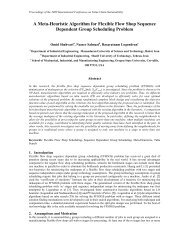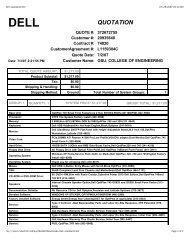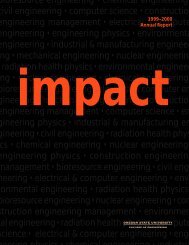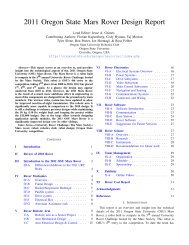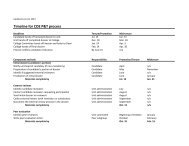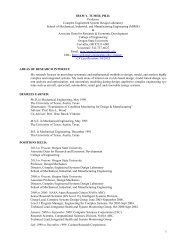Uncertainty of the iodine-131 ingestion dose conversion factor
Uncertainty of the iodine-131 ingestion dose conversion factor
Uncertainty of the iodine-131 ingestion dose conversion factor
Create successful ePaper yourself
Turn your PDF publications into a flip-book with our unique Google optimized e-Paper software.
The uptake <strong>of</strong> <strong>iodine</strong> by <strong>the</strong> thyroid is directly correlated to thyroid mass (19) and decreasesonly slightly with increasing age (16) . Both mass and uptake fraction vary with dietary intakes <strong>of</strong><strong>iodine</strong>, increasing with low intakes and decreasing with high intakes (19) . The size <strong>of</strong> <strong>the</strong> thyroid, andthus, <strong>the</strong> uptake fraction, is highly dependent on <strong>the</strong> amount <strong>of</strong> <strong>iodine</strong> in <strong>the</strong> diet (18) . Bair et al. (20)have shown that thyroid uptakes were about 20% in rats with normal <strong>iodine</strong> diets, but increased to40-50% with <strong>iodine</strong>-deficient rats. Dolphin (19) states that, because <strong>of</strong> its interdependence withthyroid mass, uptake fractions and thyroid masses must be derived from similar cohorts. Forexample, an appropriate uptake fraction for a cohort from <strong>the</strong> United States, where <strong>iodine</strong> isabundant in <strong>the</strong> normal diet, is about 20%. However, in countries where <strong>the</strong> <strong>iodine</strong> abundance indiets is reduced, and thyroid masses are correspondingly larger, average uptakes approach 45%.The metabolism and transport <strong>of</strong> <strong>iodine</strong> in <strong>the</strong> human body is simulated using a threecompartment,first-order kinetic model (Fig. 1). This model, as developed by Riggs (16)andmodified by <strong>the</strong> ICRP (18) , contains one inorganic compartment representing iodide in <strong>the</strong> blood andtwo organic compartments representing hormonal <strong>iodine</strong> in <strong>the</strong> thyroid gland and in <strong>the</strong>extracellular tissues <strong>of</strong> <strong>the</strong> body. In <strong>the</strong> model <strong>of</strong> Fig. 1 (16,18) , iodide in <strong>the</strong> blood is ei<strong>the</strong>rtransferred to <strong>the</strong> thyroid or lost via <strong>the</strong> urine with a half-life <strong>of</strong> approximately 6 hours. TheICRP (18) metabolic data for <strong>iodine</strong> does not consider <strong>the</strong> blood-to-thyroid transfer to have anyholdup time, however, o<strong>the</strong>r interpretations <strong>of</strong> <strong>the</strong> Riggs model account for this short-term delay (21) .Once in <strong>the</strong> thyroid, iodide is converted to an organic form and <strong>the</strong>n lost to <strong>the</strong> extracellular tissues<strong>of</strong> <strong>the</strong> body with a half-life <strong>of</strong> about 120 days. Still in <strong>the</strong> organic form, <strong>iodine</strong> in <strong>the</strong> body istransferred, with a half-life <strong>of</strong> approximately 12 days, ei<strong>the</strong>r back to <strong>the</strong> blood and converted toiodide or lost via feces. During pr<strong>of</strong>use sweating, significant amounts <strong>of</strong> iodide can be lost byperspiration, but this route is neglected in <strong>the</strong> model (16,18) .Iodine-<strong>131</strong> decays to <strong>131</strong> Xe and <strong>131</strong>m Xe with yields <strong>of</strong> about 99% and 1%, respectively (22) .Xenon-<strong>131</strong> is a stable isotope, while <strong>131</strong>m Xe emits a 164 keV electron via internal <strong>conversion</strong>. Since4


